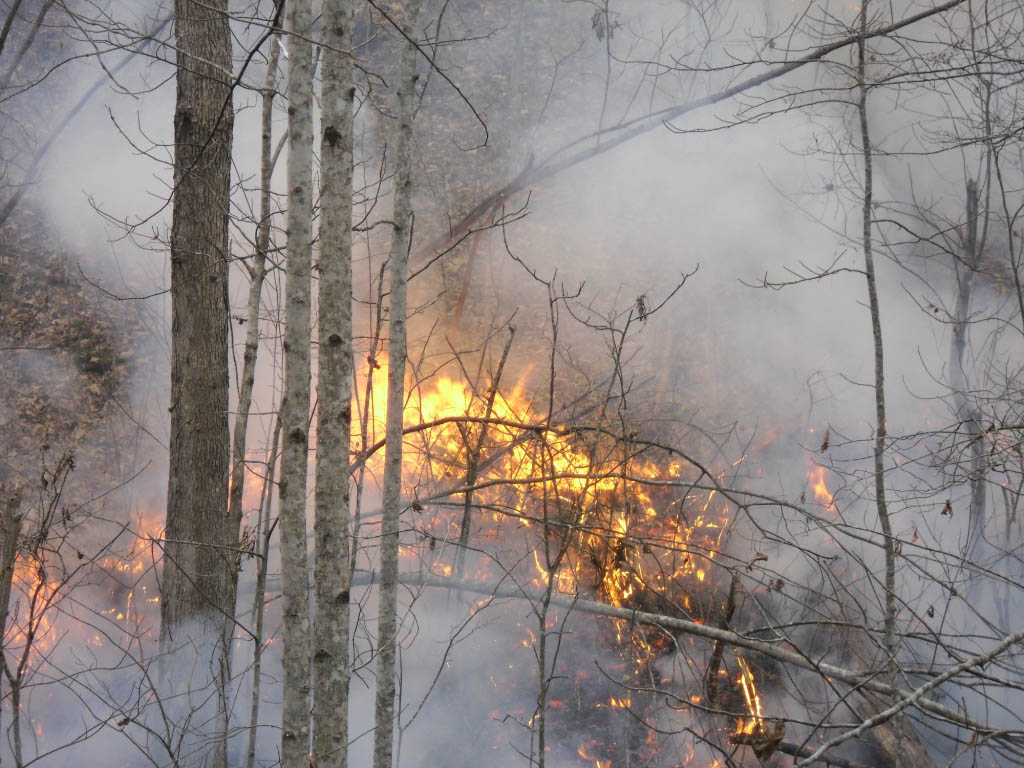Effects of forest fires reverberate into economy
Effects of forest fires reverberate into economy

The forestry sector plays a major role in Kentucky’s economy. The state has recently been hit hard by forest fires in the eastern and southern regions, and the damage will be felt statewide.
In many Eastern Kentucky counties, forests account for more than 80 percent of the land base. In 2015, revenues from timber harvests, primary industries such as logging and milling and secondary industries that use lumber and other primary products in manufacturing added $14.6 billion in direct, indirect and induced revenue to the state’s economy. One acre of harvested timber results in nearly $24,000 in direct revenue and a total of nearly $40,000 in indirect and induced revenues, said Jeff Stringer, extension professor of silviculture in the University of Kentucky Department of Forestry.
Prolonged drought in much of the state this fall has triggered bans on outdoor burning in 101 counties. The Kentucky Division of Forestry estimates that, as of Nov. 22, more than 46,000 acres of woodlands have burned in southeastern Kentucky since Oct. 27. This brings the total acreage burned in 2016 to more than 67,000.
“Our research shows a 57 to 71 percent loss of high value timber products in stands that are subjected to wildfires,” Stringer said. “Trees that contain veneer, lumber and barrel logs can easily be degraded. The loss in value to the landowner is significant and to our rural economies even more. In just a few short weeks, wildfires have resulted in a $1.1 million loss in timber potential in Eastern Kentucky, and this figure is mounting.”
The region will suffer from long-term loss of jobs and economic potential for years.
“Unfortunately, this loss stays with us, as new timber does not grow overnight. It can take 50 to 70 years, at the very best, to regrow the volume and quality lost on these acres,” he said.
Eastern deciduous forest fires do not burn as hotly as western fires do, due in part to highly inflammable coniferous resins and tree needles. Instead, wildfires in this part of the country have a tendency to run along the ground, fed by fuel from fallen leaves, dead limbs and toppled trees. But the damage to eastern woodlands can still be extensive.
Even if a tree does not exhibit external scars, the heat from a fire can easily kill the tissue that produces new wood and bark. This opens the tree to fungi that rots the interior of the tree, significantly reducing its timber value. If it can be harvested at all, the grade of the timber is reduced after a tree goes through a fire, and the price for that timber decreases as a result.
Forests are not just the sum of their timber products, however. They provide cleaner air and water and capture carbon, keeping it from entering the atmosphere. Woodlands add to the biodiversity of the state and provide wildlife habitat, as well as recreational opportunities for people. Wildfires can have both short-term and long-term effects on these highly valuable forest assets.
Stringer said landowners can help to reduce the impact of wildfires to their woodlands.
“Building and seasonally maintaining fire breaks can help reduce the risk to your property,” he said. “Also, keeping an eye on your property and talking to neighbors about outdoor burning is prudent.”
The Kentucky Division of Forestry attributes 98 percent of the fires in the current fire emergency to human involvement, with 64 percent due to arson.
Agricultural Economics Forestry & Natural Resources


